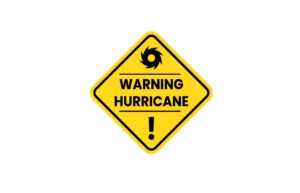Media & news

Normal?
Nov 4, 2024
Environmentalists have declared: “The science of climate change is over.” As evidence that carbon emissions must be immediately reduced, the media bombards us daily with climate news about “today is the hottest day in recorded history” and “no storm has ever been as bad as Helene, except that Milton is coming next and will surely be worse because carbon emissions are higher.” That news is supposed to convince us that the models produced by climatologists and others (scientists and not) undeniably establish that global carbon emissions must be reduced to pre-2010 levels by 2030 to hold global temperatures to no more than a 1.5% increase by 2050 and a 2% increase by 2100.
The basic premise is that global temperatures were perfect prior to the Industrial Revolution and before humans started emitting greater amounts of carbon dioxide. However, was the climate and the weather always perfect before humans messed it up, or is it even worse today than in the past? Opinions on those issues and more are addressed in the book The Whole Story of Climate: What Science Reveals About the Nature of Endless Change by E. Kirsten Peters, a Geologist and retired Professor of Geology at Washington State University.
Dr. Peters starts by stating, “Geologic evidence plainly teaches that Earth’s climate has changed from staggering extremes of balmy weather to bitter cold. And, that’s not just a description of ancient history, when dinosaurs roamed the world. Instead, it’s the clear record of climate change during recent times, when full modern Homo sapiens left Africa, spread around the world, and ultimately founded our various cultures and civilizations”
Dr. Peters emphasizes how quickly climate changes have swept over the Earth and how extreme the climate changes have been. She states, “Many of the changes have not been gradual events, unfolding over dozens of centuries or millennia. Most climate changes in geologically recent times have occurred over a mere twenty to thirty years – within the span of a single lifetime.”
She also states, “The more scientists learn about the natural disasters woven into the fabric of the planet, the greater our awe about how supremely fickle is the climate on Earth. For example, what is now the driest part of the Sahara Desert was only four thousand years ago a lush, verdant landscape with lakes, fish, and people. But when climate turned yet another corner in the Earth’s long history, the rains shifted too far to the south and the green splendor vanished, along with the people. What’s worse, the Earth looks like she may be overdue for another, fully natural, climate revolution, as well as for more moderate and ongoing climate shifts.”
Dr. Peters continues, “Regardless of American energy policies and the levels of our greenhouse gas emissions, changes in climate – including both massive and moderate upheavals in temperature and precipitation – are going to be a part of Earth’s future, just as they have been the bedrock of its past.” She follows with, “Many geologists believe you’ve only been told one isolated part of a much longer and richer climate story. The best guide to the future is evidence of the past and you may have to unlearn a few things you think you know. Many educated Americans live under the assumption that Earth’s climate is quite static under natural conditions, but thinking of the climate as a constant is grossly misguided. The weather of our childhood was different than the weather endured by the passengers on the Mayflower and also different than the weather in which the Vikings harassed the people of Europe a thousand years ago. Change, including fully natural climate revolutions and more frequent and moderate climate shifts, is understandably frightening. That’s why it is naturally comforting to believe the message of the extreme environmentalists in recent years that human beings are the sole cause of current changes in weather and we might be able to do something about it.”
Dr. Peters relates in much detail that recent geological history has been characterized by long periods of bitter cold during which enormous glaciers formed and covered much land. She says, “Ocean levels were much lower with water locked up on land in glacier ice. The low seas allowed people and animals to walk to North America from Asia, which changed the Earth’s Ecosphere.”
Geology indicates that over the past two million years, the Earth has experienced 100,000-year periods of bitter cold, Ice Age type climate separated by 10,000-year periods of much milder, warmer weather like we are experiencing today. Dr. Peters also warns that we are near the end of a 10,000 year warming period. “If the Earth continues to behave as she has for the past few million years, we must expect a return to bitter cold at some point. Scientists know the change to the bitterly cold climate regime is likely to happen very fast – possibly over the course of a generation or two.”
Dr. Peters opines, “Our own activities may inadvertently help us to avoid a return to crushing cold. If we think of climate change as our enemy, we will always be defeated.”
Geology, a real science and the history of the Earth, indicates the Earth’s climate has never been static and never will be. Changes in climate and global temperatures will continue. Why then do governments insist on depriving poor people of better lives provided by cheap energy and spending trillions of dollars on more expensive renewable energy? Wouldn’t the world be better off spending that money preparing to meet the coming climate changes that real scientists say are coming?